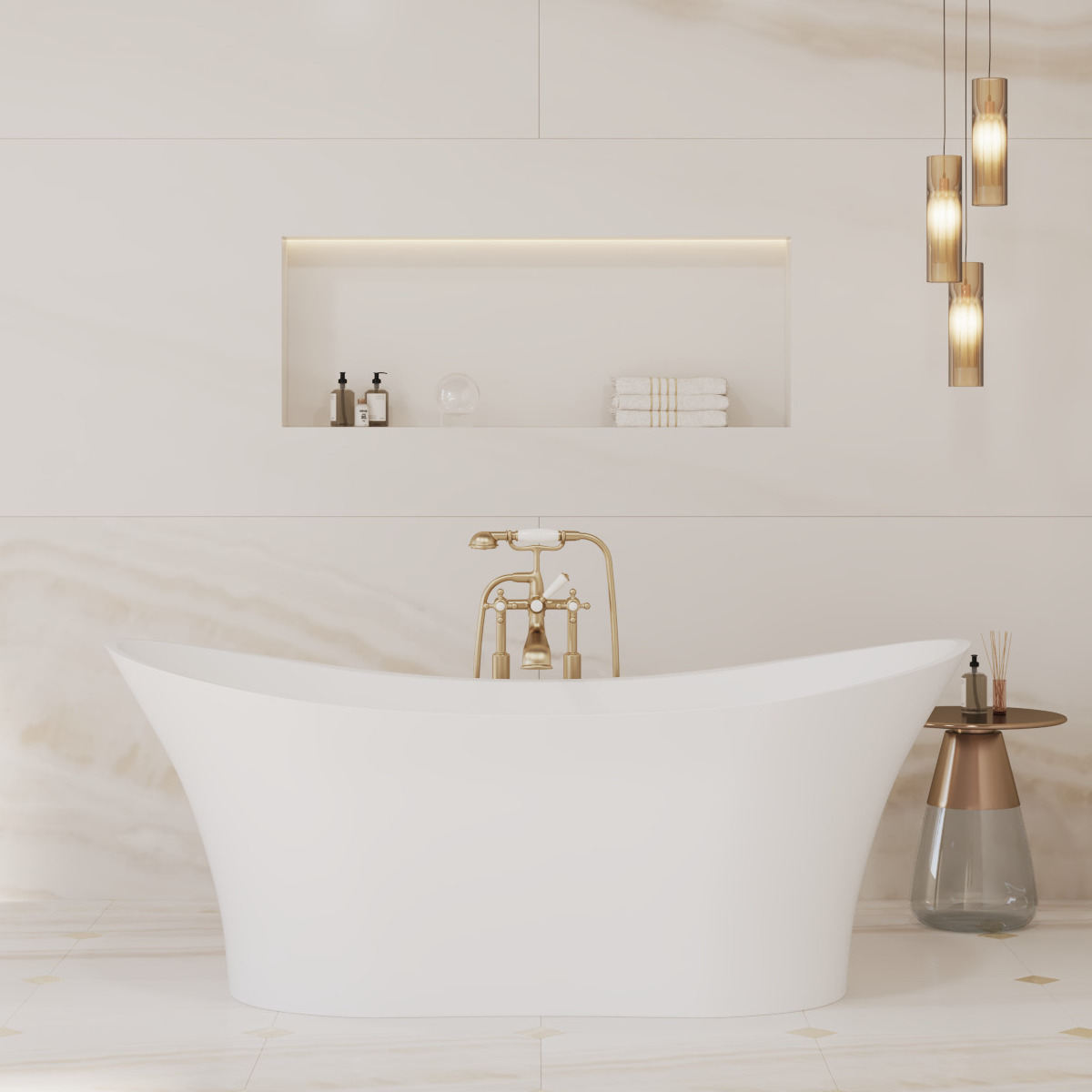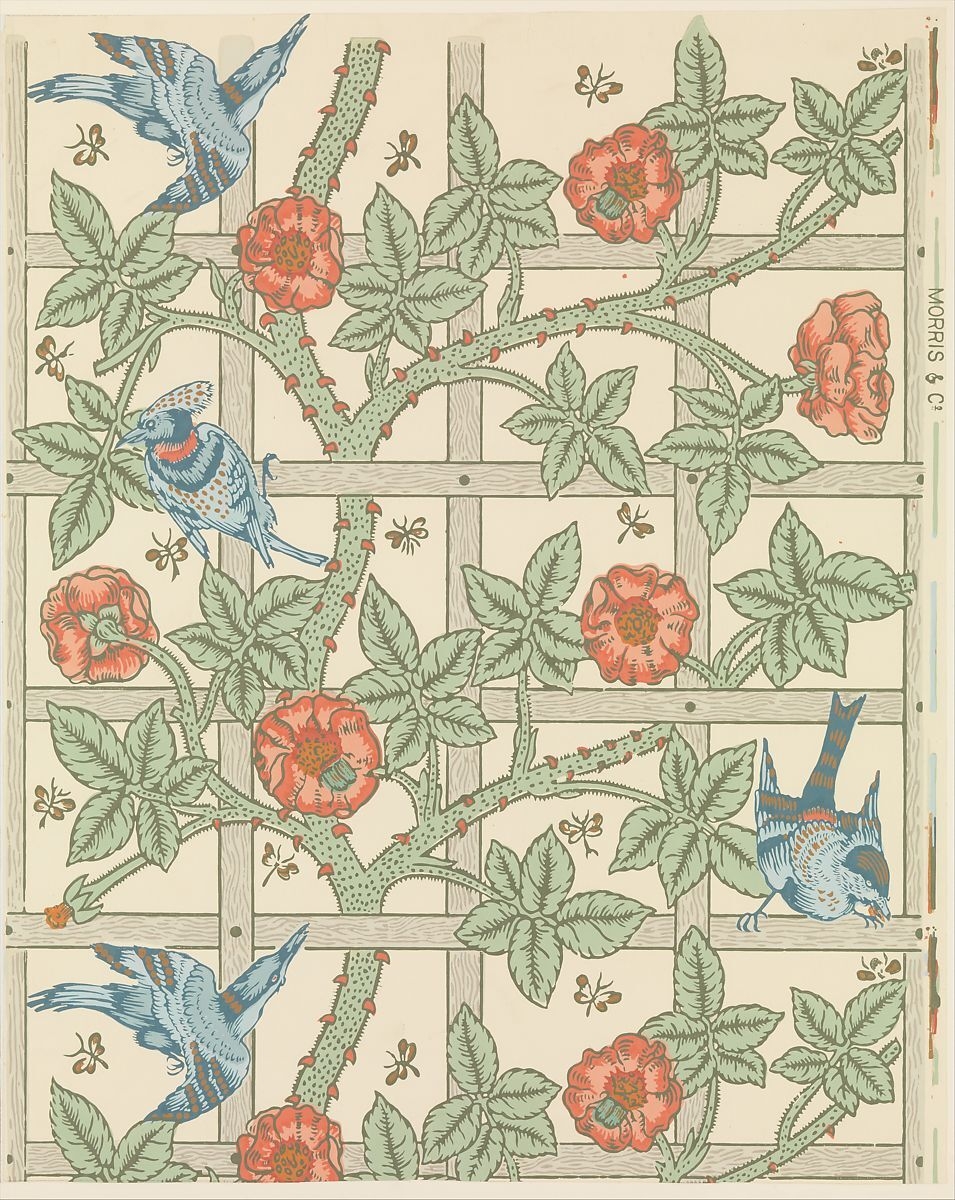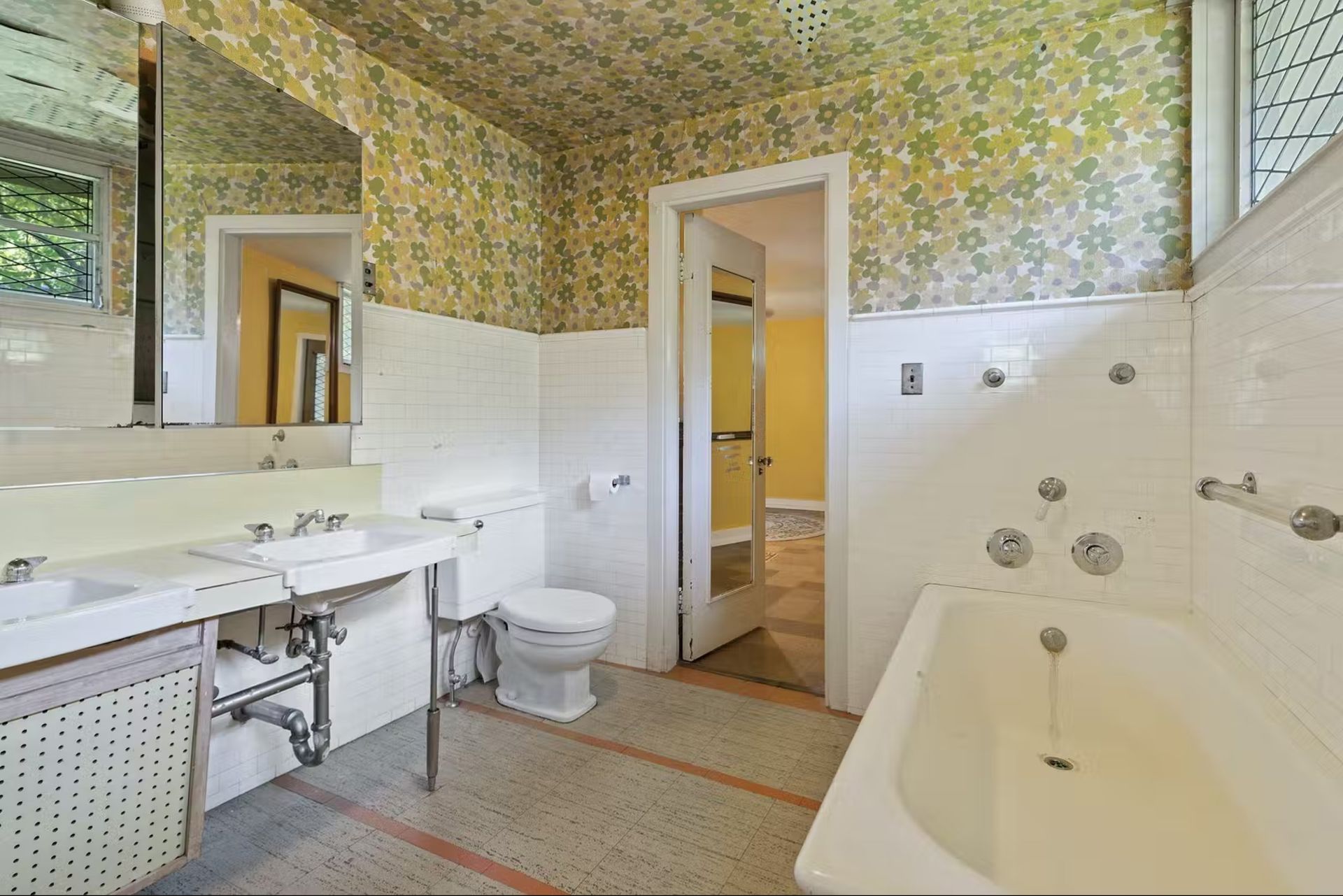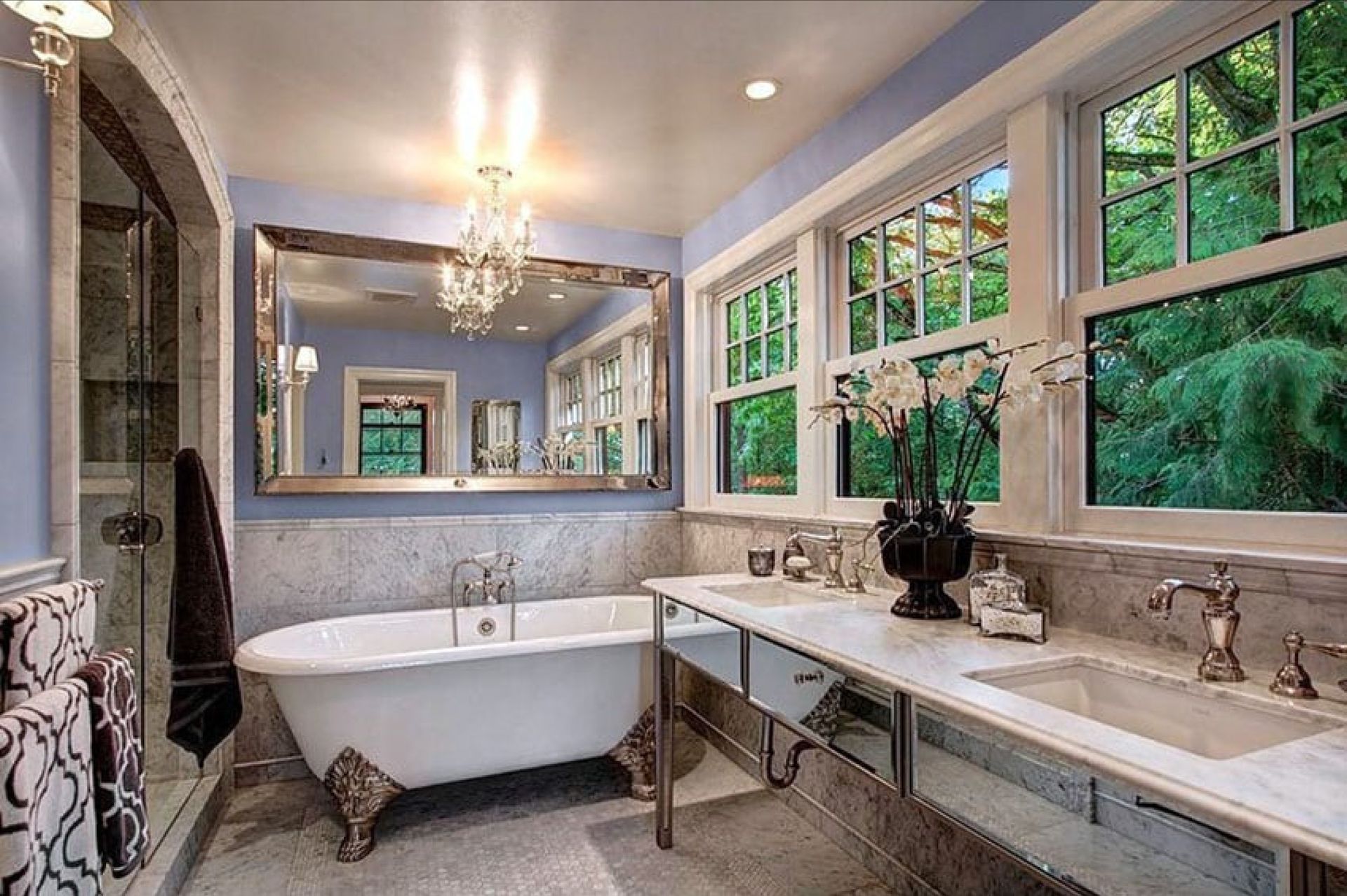
Is The Arts & Crafts Movement Back on Trend?
Back in September 2018, Swedish fashion retail giant H&M announced that it would be collaborating with Morris & Co., the brand founded in 1861 by William Morris—one of the best-known designers of the Arts and Crafts Movement.
This shift in mainstream fashion away from the “ugly sneakers” and “ridiculously oversized coats” of postmodern style represented the return to a more romantic era. And it’s one that has now begun to enter our homes increasing measures.
More and more, interior designers are looking back to the decorative richness of the Arts & Crafts Movement, enabling them to experiment with mix-and-match styles that fuse the utilitarianism of mid-century interiors with the warmth, craftsmanship and traditionalism of a more ornate era.
So, let’s take a closer look at the Arts & Crafts Movement and show you a few examples.
Contents
What is the Arts & Crafts Movement
Examples of Arts & Crafts Movement design
Famous Arts & Crafts Movement designers
Designing a bathroom in the Arts & Crafts Movement style
What is the Arts & Crafts Movement?
A multinational rebellion against the perceived decline in the decorative arts following the industrial revolution, the Arts & Crafts Movement stood for handcrafted excellence, raw simplicity of design, and the value of artisans. It was influenced by medieval, romantic and folk styles, all of which shared in common a kind of earthy realness with a focus on nature and rudimentary craft—William Morris’s “Trellis” wallpaper being a great example.

"Trellis" by William Morris - Image from The Met.
The Arts & Crafts Movement grew between around 1880 and 1920 until it was displaced by Modernism, though there’s a clear lineage between it and its successor, the Modern Style (also known as British Art Nouveau). At that time, its effects were most strongly felt in the fields of decorative product design, architecture, interior design, textile design, and garden design.
The term “Arts and Crafts Movement” was first coined by English artist and bookbinder T.J. Cobden-Sanderson at an 1887 meeting of the Arts and Crafts Exhibition Society.
Examples of Arts & Crafts Movement design
The decorative arts produced by the Arts & Crafts movement were both functional and ornate. Tiffany lamps, for instance, represent one of the most enduringly popular outputs from the Arts & Crafts Movement. This example from the Met Museum collection may not be typical of the Tiffany shades we know and love today, but it’s a great example of the high-cultural value that this ultimately working-class movement has gone on to attain.
Another well-known example of Arts & Crafts design is the vernacular chair, initially designed by Philip Webb for William Morris’ fledgling company, Morris, Marshall, Faulkner & Co. in the 1860s. It was known for both its laid-back comfort as well as its beautiful carving and upholstery. The example you can see here has been decorated with a typically ornate William Morris fabric.
Famous Arts and Crafts Movement Designers
William Morris is probably the most celebrated of all proponents of the Arts & Crafts style. As well as being a designer, he was a prolific and highly regarded writer of poetry, fiction and essays. However, he is best known for his 600+ densely detailed designs that were transformed into textiles, embroideries, and wallpapers. He used almost exclusively natural dyes and worked directly on the manufacturing of his goods by hand.
Brit Morris’s beautiful, ornate designs demonstrate his love for medieval and Persian textiles in equal measure. He taught himself how to embroider, learned dyeing methods at Staffordshire dye works, and even designed his own typefaces for book printing—Golden, Troy and Chaucer.
Equally well known as Morris as one of the leading proponents of the Arts & Crafts Movement is American architect Frank Lloyd Wright. The founder of what became known as the “prairie style” of architecture, thanks to its stylistic nods to the broad, flat landscapes of the American Midwest, Wright stood what he called “organic architecture” that blended naturally in with its environment.

1909 Frank Lloyd Wright Home Bathroom - Image from Dwell.
His work became the blueprint for the vast majority of suburban housing in America, today, the William H. Winslow House in Illinois being a great example of his early signature style. Arguably Wright’s most stunning project, Fallingwater, however, designed in 1935 in Pittsburgh, PA, is now a World Heritage Site and is listed in the Smithsonian’s “Life List of 28 Places to See Before You Die.”
Designing a bathroom in the Arts & Crafts Movement style
Bathrooms designed in the Arts & Crafts style generally fall into two categories: those designed in a subtly ornate yet clinical white and those filled with carved wood and opulent use of colour.
A white Arts & Crafts style bathroom might, for instance, feature painted white wood, a curved, ornate freestanding bathtub, and be decorated with marble figurines and pots of feathery celosia or dried pampas grass.
A more colourful take on an Arts & Crafts bathroom would give you the scope to mix and match patterns to your own taste. If you choose to incorporate wallpaper in your bathroom, you can still purchase the famed designs of William Morris today—their price point will tell you that they’re the height of high-end style. They naturally sit beautifully alongside a clawfoot bathtub for that traditional Arts & Crafts look and feel. You might also want to incorporate deep oak or even mahogany tones into the bathroom for that truly craftsman-like aesthetic. Are you bold enough for wooden wall panelling?

Antique Clawfoot Bathtub - Image from Designing Idea
If the answer to the last question is “no way”, then you can still incorporate an Arts & Crafts Movement style into your bathroom, but you might prefer to mix and match with more modern elements. For instance, William Morris textiles look just as good alongside an up-to-the-minute freestanding tub like the Miriam as they do juxtaposed with a more contemporary-looking piece.
The beauty of the 21st Century is that there’s so much stunning design history behind us that we can cherry-pick the parts we like best to express our own personalities. In the meantime, have fun exploring the Arts & Crafts style.
Looking for something else to read? Check out our article Should I buy art for my bathroom? The perils of decorating a high-moisture environment.
Main Image Lille Freestanding Solid Surface Bathtub.